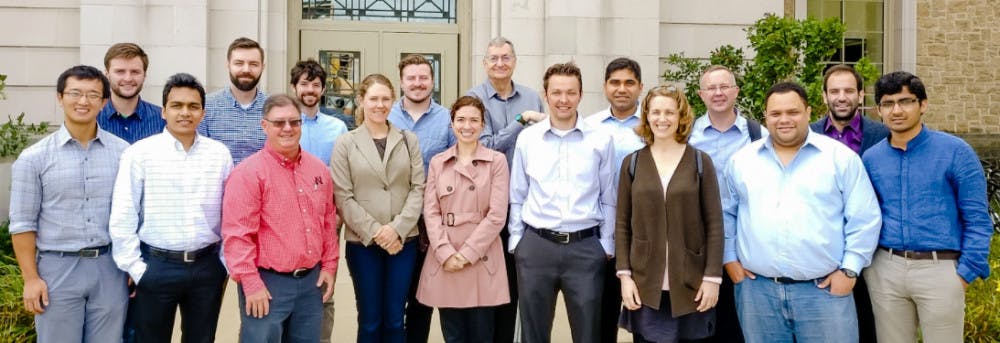PANTHER, a multi-institutional research collaboration, recently received a $10 million federal grant from the Office of Naval Research within the U.S. Department of the Navy.
The goal of PANTHER is to understand, detect and prevent traumatic brain injuries. Achieving these three overarching goals requires experts from a variety of fields to work as a team.
Christian Franck, associate professor of engineering at University of Wisconsin-Madison, launched the PANTHER project in 2017 when he was a professor at Brown. “I was really curious in understanding the brain's response to impact and mechanical insults that lead to injury,” he said.
In 2010, Franck described himself as a mechanical engineer “interested in this interplay between mechanical forces acting on biology.” He and a few colleagues “had common interests and an approach about how to think about this issue, but (they) needed resources,” he said.
Diane Hoffman-Kim, associate professor of medical science and engineering and PANTHER’s current neural tissue lead, worked on the collaboration in its early years. “Franck and I worked together on a shoestring budget, and one day (he) said, ‘I’m submitting this grant, do you want to be a part of this?’ I had never dreamed that it would turn into such a large and great collaboration,” Hoffman-Kim said. “It’s been wonderful.”
Franck works virtually from Wisconsin-Madison with Hoffman-Kim, Assistant Professor of Engineering Haneesh Kesari and Associate Professor of Solid Mechanics David Henann at Brown.
“It's a really big team, and there’s a lot of expertise,” Henann said. The research focus of these collaborators “spans from the outside of the helmet all the way down to the neurons in the brain.”
Kesari, current kinematic analysis lead of PANTHER, works on developing real-time intervention technology that can support the brain so injuries can be identified.
Similar to how an accelerometer in cars can detect a crash, causing an airbag to deploy, the PANTHER team has succeeded in simulating head motion and using accelerometers to sense when it falls. They hope to capitalize on this technology to potentially create a helmet that would be able to sense when someone falls and “(deploy) some sort of protection so the injury is reduced,” Kesari said.
This novel use of technology is one of multiple end goals the PANTHER collaboration has for the future. “The obvious goal is to make better, more protective liners for helmets. From an academic perspective, we are aiming to learn a lot more about how brain injury occurs and how we might be able to prevent it,” Hoffman-Kim said.
The $10 million grant that PANTHER received in December will support collaboration towards achieving these goals. “That money allows us to not worry about constantly getting funding, and instead allows us to focus on the actual problem at hand,” Franck said.
The multi-institutional nature of the PANTHER collaboration also prepared the team for adapting to the COVID-19 pandemic. “Before the pandemic, we had a yearly or biannual retreat so we could see each other in person,” Hoffman-Kim said. “But we’ve been having remote meetings with everyone (in the PANTHER collaboration) around the country for the past few years, so (remote meetings) feel very familiar.”
Recognizing the interdisciplinary character of the team, Franck said, “When you’re working on challenging problems, diversity is the best thing you can have.”

ADVERTISEMENT




